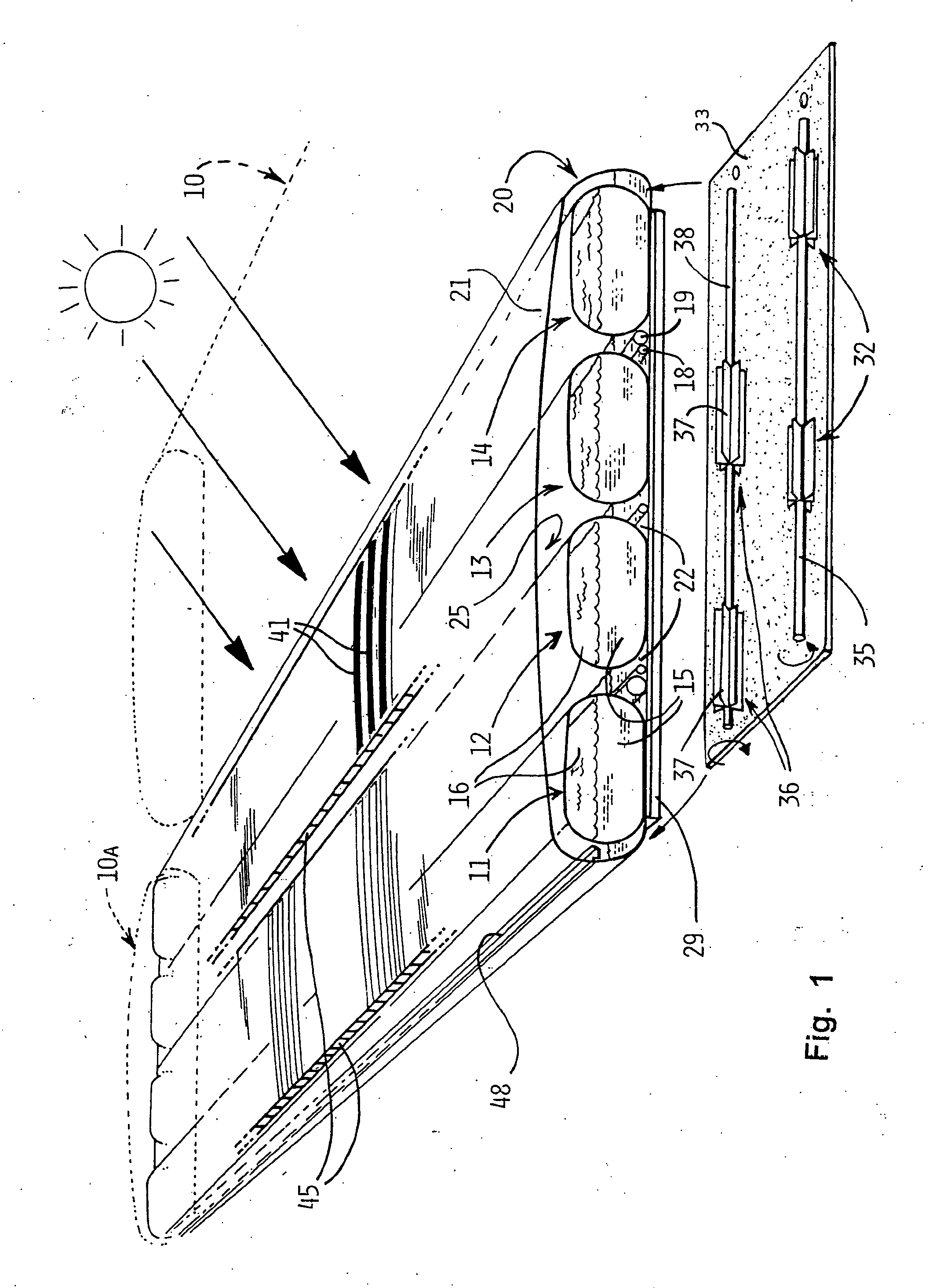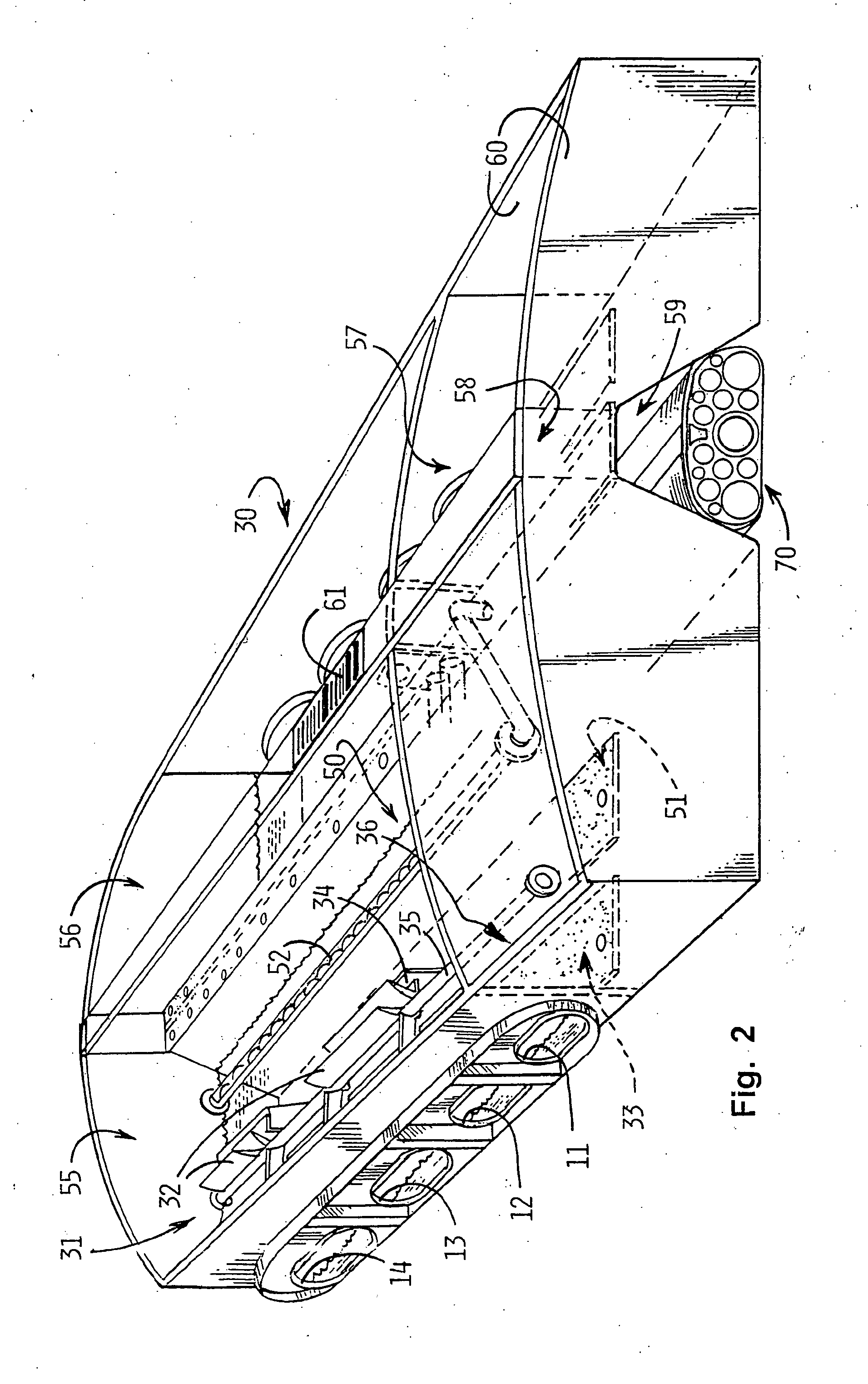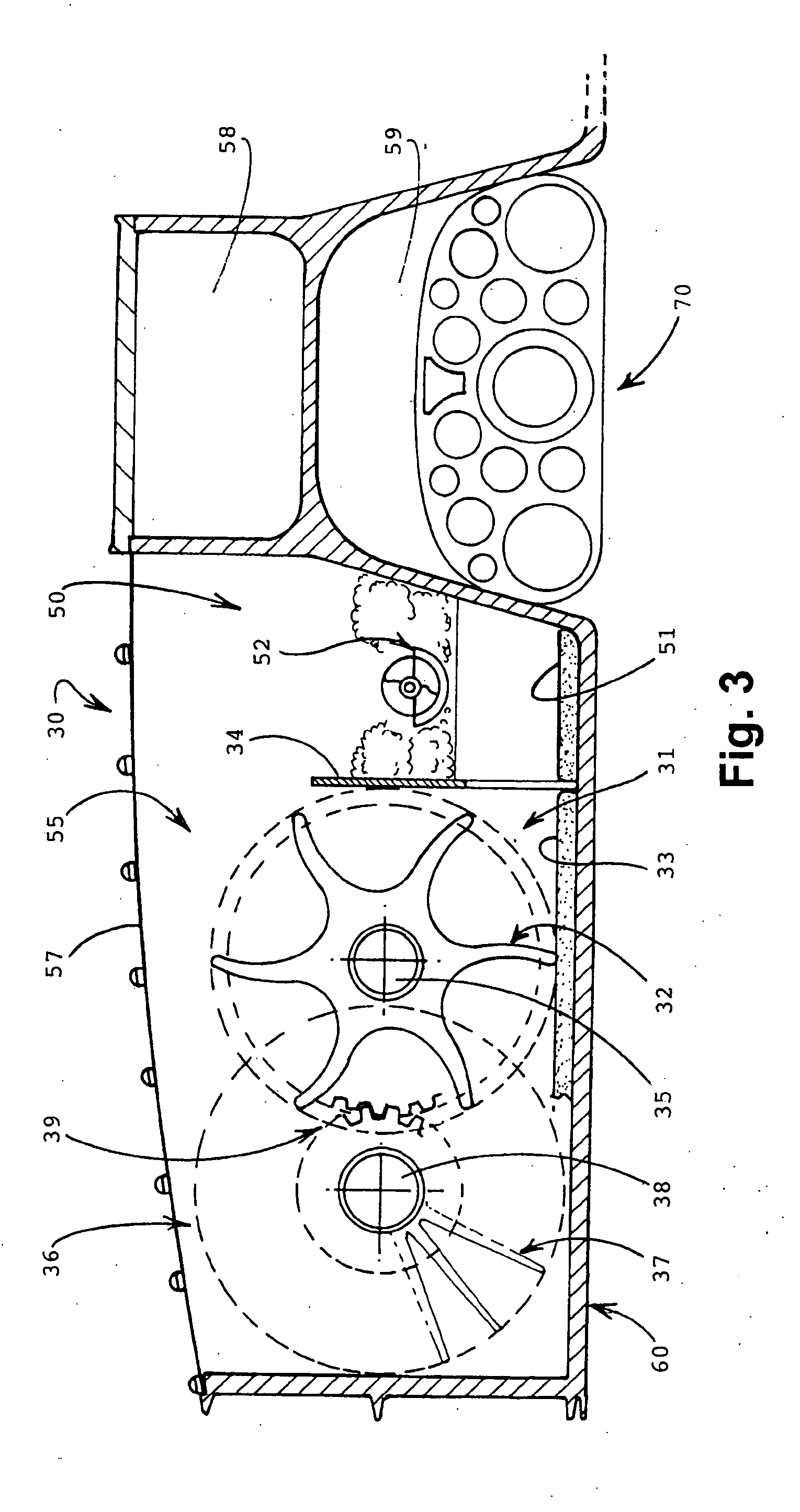System for cultivation and processing of microorganisms, processing of products therefrom, and processing in drillhole reactors
- Summary
- Abstract
- Description
- Claims
- Application Information
AI Technical Summary
Benefits of technology
Problems solved by technology
Method used
Image
Examples
Embodiment Construction
Bioreactor Design
[0101]Winwick bioreactors and their associated impeller / harvester units, are designed to be mass produced as complete assemblies in a factory environment. The bioreactors are designed to be transported in flattened form on reels, together with their enclosed piping. Reels are unwound or rewound on-site using high, wheel-base tractors with reel management attachments. A bioreactor body 10 (see FIG. 1) comprises four, suitably separated, clear plastic film phytotubes 11-14 (the tubular containers for growing the microalgae, diatoms or other or phytoplankton in aqueous, growth media with room 16 for exhaust gas above), within a protective and insulating, outer envelope 21 and solar-adaptive fluting 45. All the tubes are produced by standard blow-moulding or extrusion techniques. The envelope 21 is temporarily sliced open lengthwise to facilitate the placement and fixing of the tubular contents, the fluting 45, the photovoltaic (PV) 41, the supporting members, and the p...
PUM
 Login to View More
Login to View More Abstract
Description
Claims
Application Information
 Login to View More
Login to View More - R&D
- Intellectual Property
- Life Sciences
- Materials
- Tech Scout
- Unparalleled Data Quality
- Higher Quality Content
- 60% Fewer Hallucinations
Browse by: Latest US Patents, China's latest patents, Technical Efficacy Thesaurus, Application Domain, Technology Topic, Popular Technical Reports.
© 2025 PatSnap. All rights reserved.Legal|Privacy policy|Modern Slavery Act Transparency Statement|Sitemap|About US| Contact US: help@patsnap.com



